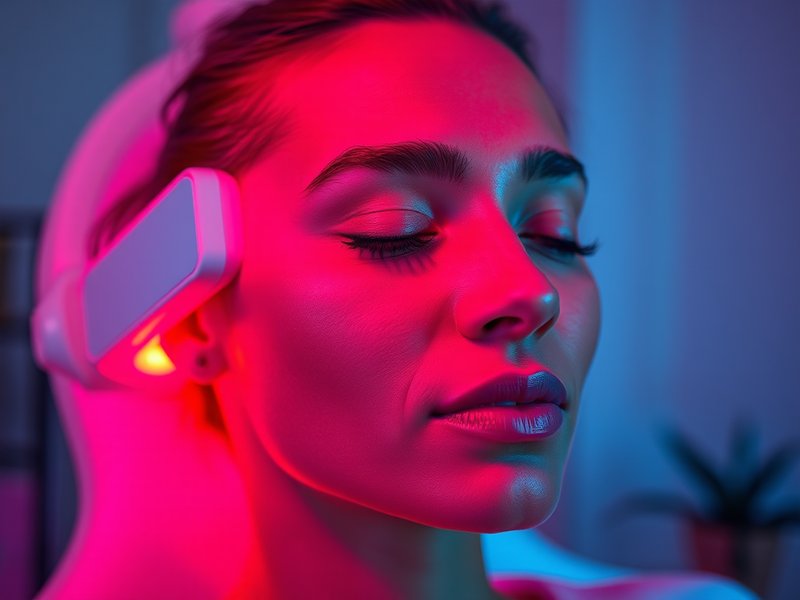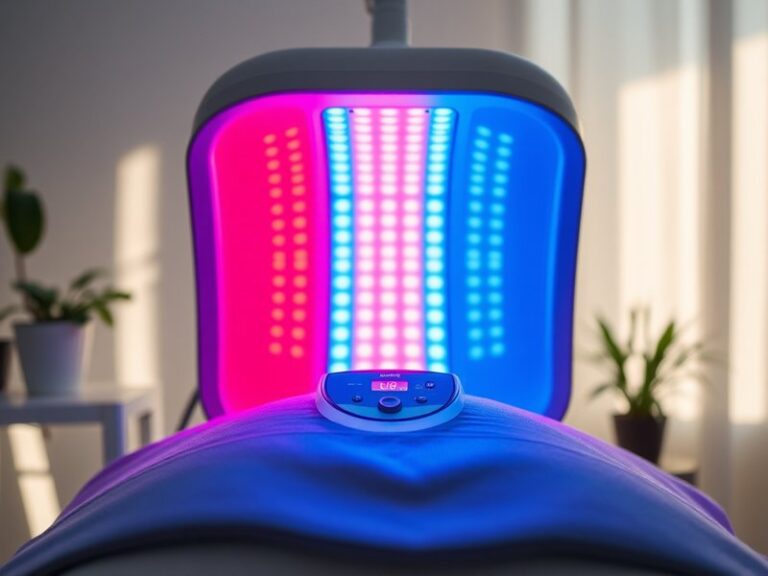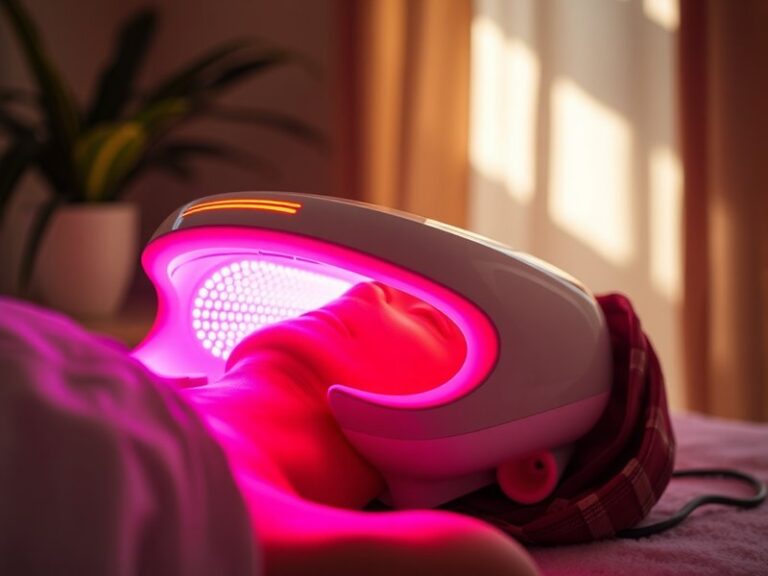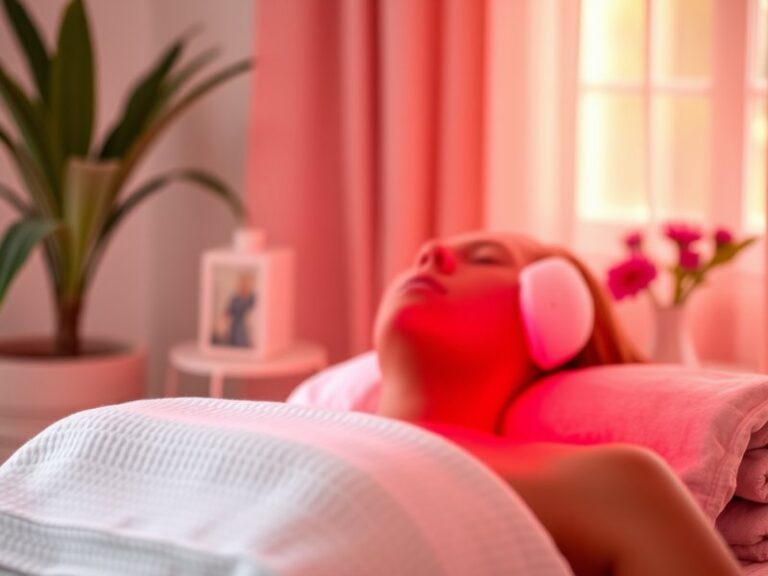Can Red Light Therapy Make Hyperpigmentation Worse?
Can Red Light Therapy Make Hyperpigmentation Worse?
Have you ever wondered if red light therapy is beneficial for hyperpigmentation, or could it actually worsen the condition?
In this article, we will explore the relationship between red light therapy and hyperpigmentation. We will cover the mechanisms of red light therapy, its potential benefits for skin conditions, and specifically address whether it may exacerbate hyperpigmentation issues. By the end of this piece, readers will have a clearer understanding of red light therapy’s implications for hyperpigmentation.
Key Takeaways
- Red light therapy uses specific wavelengths of light to stimulate skin healing and rejuvenation.
- While it has many benefits, individual skin responses can vary, potentially affecting hyperpigmentation differently.
- Consulting with a dermatologist before starting treatment can help tailor the approach to your unique skin needs.
What is Red Light Therapy?
Red light therapy (RLT) is a non-invasive treatment that utilizes low wavelengths of red light to promote skin healing, reduce inflammation, and enhance cellular function. It works by penetrating the skin’s layers to stimulate the production of collagen and elastin, which are crucial for skin health.
RLT is often used in various medical and cosmetic settings, including dermatology clinics and at-home devices. Common applications include treating acne, scars, and signs of aging. However, its impact on hyperpigmentation—a condition characterized by darker patches of skin—merits further examination.
Discover our thoughts on Is Red Light Therapy Beneficial for Kidneys?
What are the Benefits of Red Light Therapy?
Red light therapy offers a variety of benefits that make it popular among skincare enthusiasts and professionals alike.
Promoting Cellular Repair
RLT stimulates cellular activity, promoting healing and repair. Increased ATP (adenosine triphosphate) production nourishes cells, which can enhance skin repair processes, making it potentially useful for treating skin discolorations.
Reducing Inflammation
Chronic inflammation can worsen hyperpigmentation. RLT has anti-inflammatory properties, which can help calm irritated skin and create a more balanced complexion.
Enhancing Collagen Production
Collagen is a critical protein for maintaining skin structure. By boosting collagen production, RLT can help improve the overall texture and tone of the skin.
Improving Skin Texture
RLT can aid in refining the skin’s texture. While not directly affecting hyperpigmentation, improved skin texture can enhance overall appearance and possibly make dyschromia less noticeable.
Is it Possible to Worsen Hyperpigmentation with Red Light Therapy?
Although red light therapy can be beneficial, it is possible for some individuals to experience aggravation of hyperpigmentation post-treatment. This phenomenon often stems from several factors, and understanding these can clarify how to approach treatment effectively.
See the full explanation Red Light Therapy Mechanism
What are the Advantages of Monitoring Treatment?
Being vigilant during RLT can help mitigate adverse effects, such as intensified hyperpigmentation. The advantages include:
- Personalized Treatment: Regular monitoring allows tailoring sessions to individual skin responses, enhancing efficacy while reducing risks.
- Adjusting Parameters: Professionals can adjust light intensity and duration to find the optimal settings for individual skin types.
- Early Detection: Observing skin reactions closely can help identify any exacerbation of conditions early, allowing for prompt adjustment.
What are the Disadvantages of Overuse?
Using RLT excessively or without professional guidance may increase the risk of worsening hyperpigmentation. This includes:
- Increased Skin Sensitivity: Overexposure may lead to sensitivity, resulting in heightened discoloration in sensitive areas.
- Inconsistent Results: Without proper management, results may vary significantly between individuals, leading to unexpected pigmentation fluctuations.
- Delayed Treatment Effects: Overuse may engage the skin’s stress response, slowing down desired healing effects, ultimately challenging pigmentation issues.
What are the Things to Consider Before Starting Red Light Therapy?
Before beginning RLT for hyperpigmentation, individuals should consider several factors to avoid unintended consequences.
Skin Type and Sensitivity
Understanding your skin type is crucial. Individuals with sensitive or reactive skin may be at higher risk of experiencing worsened hyperpigmentation from RLT.
Existing Skin Conditions
If you have pre-existing conditions, such as melasma or post-inflammatory hyperpigmentation, consultation with a dermatologist is paramount to determine if RLT is suitable.
Adherence to Protocol
Using the therapy according to established protocols is crucial. Straying from recommended frequency or intensity can lead to adverse effects, including exacerbation of pigmentation.
Follow-Up Monitoring
Regular follow-ups with a skincare professional can help assess progress and make necessary adjustments, further securing positive outcomes.
What are the Alternatives to Red Light Therapy?
For those concerned about hyperpigmentation, several alternatives to RLT exist.
Topical Lightening Agents
Products containing ingredients like hydroquinone, niacinamide, or vitamin C can be effective in lightening hyperpigmentation when used consistently.
Chemical Peels
Chemical peels exfoliate the skin and can reduce the appearance of pigmentation. They vary in strength and should be performed by qualified professionals to minimize risks.
Lasers for Hyperpigmentation
Laser therapies are more targeted than RLT and can effectively treat hyperpigmentation. Consultations are essential for determining the most appropriate type for your specific skin type.
Microneedling
This procedure involves tiny needles that create micro-injuries to stimulate healing. It can help reduce hyperpigmentation by promoting new skin cell growth.
Conclusion: Is it Recommended to Use Red Light Therapy for Hyperpigmentation?
While red light therapy presents numerous benefits, it is essential to consider individual reactions to treatment. For some, RLT may exacerbate hyperpigmentation, particularly without proper guidance and monitoring. Consulting with a dermatologist to evaluate skin conditions and tailor the approach can enhance the chances of achieving the desired results safely.
Frequently Asked Questions
Can everyone safely use red light therapy?
Not everyone may experience beneficial effects from red light therapy. Individual skin sensitivity, existing conditions, and inappropriate usage could lead to complications. It’s best to consult a skincare professional.
How often should I use red light therapy?
Frequency depends on individual skin responses. Generally, starting with a couple of sessions per week and observing skin reactions is advisable.
What should I expect during a red light therapy session?
During a session, light will be applied to the treatment area for a specified duration. You may feel a gentle warmth, but it should not cause pain or discomfort.
Can I use red light therapy with other treatments for hyperpigmentation?
In many cases, combining treatments is possible, but it’s essential to discuss this with a dermatologist to avoid adverse reactions and ensure optimal results.
Are there any long-term side effects of red light therapy?
While RLT is generally considered safe, long-term effects can vary. Monitoring and follow-up consultations can help manage any emerging issues and tailor the treatment plan as needed.






